Santa Clara County may require Stanford University to nearly quadruple the number of housing units it has to produce for its employees to secure permission for its ambitious campus-expansion plan.
The county this week released a set of conditions that staff recommends including as part of approval of Stanford's application for a new General Use Permit, a document and guide to the university's growth between now and 2035. Stanford is seeking the permit so that it can construct up to 2.275 million square feet of new academic space, 2,600 student beds and 550 units of housing for faculty and staff.
The county's new proposal, which is subject to approval by the Board of Supervisors, would upend Stanford's housing plan by requiring an additional 1,622 units of faculty and staff housing, for a minimum of 2,172 units, along with the 2,600 student beds that Stanford had requested. It would also allow the university to go beyond the minimum requirement and build up to 2,892 housing units and 2,807 student beds.
The county is also proposing a requirement that at least 70 percent of these units — a total of 1,520 faculty units — to be built on campus.
The proposal, which the county released on Tuesday and which board President Joe Simitian discussed in a Town Hall meeting Thursday at Palo Alto's City Council Chambers, also includes a 99-year prohibition on developing in the foothills (which can only be overturned with approval of four of five board members) and a revised methodology for tallying Stanford's traffic impacts, with more consideration of reverse commutes and a new emphasis on limiting the growth of average daily traffic.
The new general use permit, much like the one the Board of Supervisors approved in 2000, will require Stanford to meet a goal of "no net new car trips" on campus. But whereas the existing permit gauges Stanford's compliance by measuring trips during a "peak hour," the new permit would base it on a three-hour "peak period" under the county's proposal.
While all these conditions are yet to be reviewed by the board, at least one member has already embraced some of the key provisions in the staff recommendation. In explaining the county position on housing, Simitian noted Thursday that Stanford's expansion plan would bring an estimated 9,610 new people to the campus, according to the environmental analysis for the GUP. The student beds, he noted, would only take care of 2,600 people (assuming one person per bed). This, Simitian noted, leaves 7,010 people vying for the 550 units.
"I don't think 550 units of housing is sufficient to address the housing needs of those 7,010 people who are left over after we remove the beds," Simitian told the crowd during the Town Hall, which was sponsored by the Palo Alto Weekly. "This has been the source of discussion pretty much from Day One with respect to the proposal."
The list of conditions did little, however, to address the topic that many in the community turned out to hear about: the impact of Stanford's growth on the Palo Alto Unified School District. Prior to the meeting, dozens of residents, including parents, students, school district officials and City Council members, rallied outside City Hall at King Plaza to demand "full mitigation" from Stanford, a phrase that Simitian also used in describing his goals for the project.
The list of conditions only calls for Stanford to relocate a designated school site from the east side of the campus to the west side. It does not, however, require the university to either contribute funding to the school district or to help it build a new school to serve the expected influx of students.
Simitian said that is a function of state law, which limits the county's ability to address school impacts as part of its environmental-review process.
"We don't have as many tools as we would like in the land use process to help our schools," Simitian said at the rally before the Town Hall. "We can address traffic, we can address housing, we can address open space protection, but what we don't have by virtue of state law is a lot of tools to help us help our local schools and the kids they serve."
Simitian expressed some hope, however, that the school district and Stanford will be able to reach an amicable resolution on school impacts in the coming months. He cited the freshly launched between the two parties as of evidence change in their university's posture.
The Board of Education had approved last November a resolution requesting that Stanford provide funding and assistance with building a new school. Stanford's unwillingness to commit to these measures has frustrated many on the school side.
On Tuesday, however, Superintendent Don Austin said the district and Stanford had agreed to start confidential discussions about benefits and mitigations.
Jean McCown, Stanford's assistant vice president and director of community relations, said in a statement Thursday that the university "will seek to have the results of direct discussions between PAUSD and the university included as community benefits in the final agreement with the county."
Simitian said he sees the restart of the negotiations as a positive sign.
"I, for one, welcome the evolution of thinking that has led to that," Simitian said during the Town Hall. "If there has been a turnaround on this issue, good! Great!"
The Board of Supervisors is also expected to broach the subject of school impacts during its own negotiations with Stanford University on a development agreement, a process that is headed by Simitian and Supervisor Cindy Chavez. The agreement will afford both sides more flexibility than the EIR process to propose mitigation strategies and community benefits that could be included as part of the expansion plan.
Stanford is unlikely to embrace the county's recommendation for more faculty and staff housing. Catherine Palter, associate vice president for land use and environmental planning, said in a statement Thursday that the university's proposal — which includes 550 units and 2,600 student beds — is based on a "careful planning process" and represents a "reasonable, responsible and paced approach, consistent with our values as a residential university committed to sustainable development and service to the community."
"We are proposing an amount of new academic space consistent with the university's historic growth rate, and 3,150 housing units and student beds, 550 of which would be subsidized apartments close to public transit for faculty and staff," Palter said. "The analysis in the county's final environmental impact report validates the careful planning that went into the 2018 General Use Permit application. The result of that process is a proposal that we feel balances the needs of the university and the community while addressing potential impacts over the life of the permit."
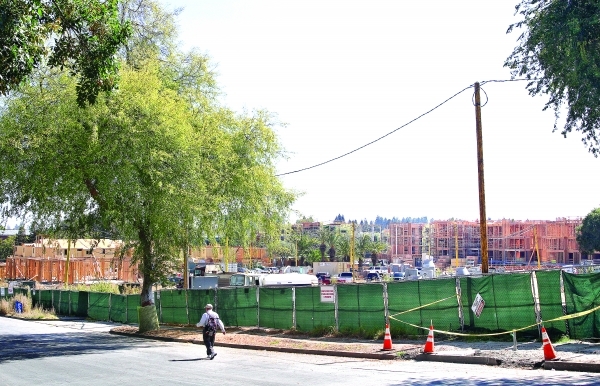
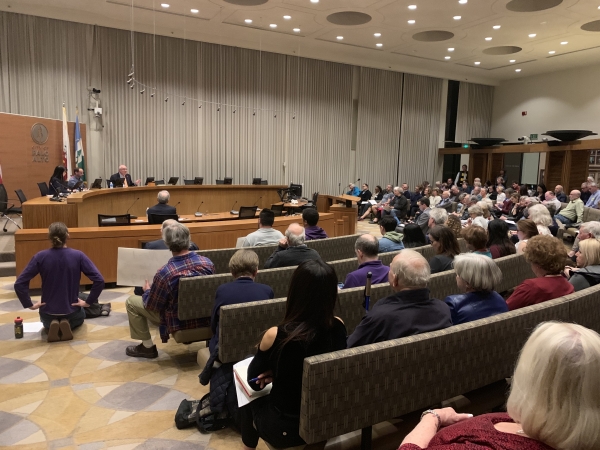
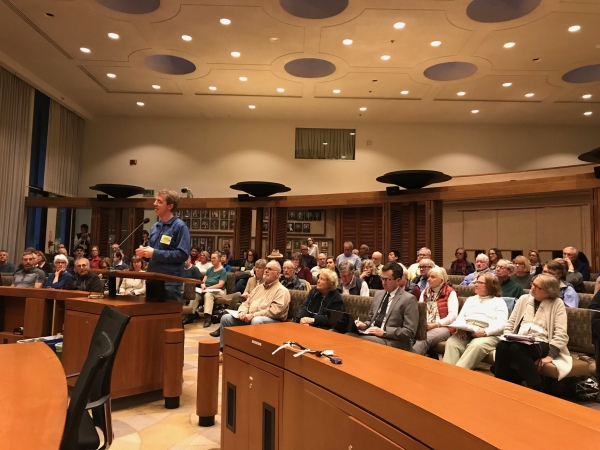
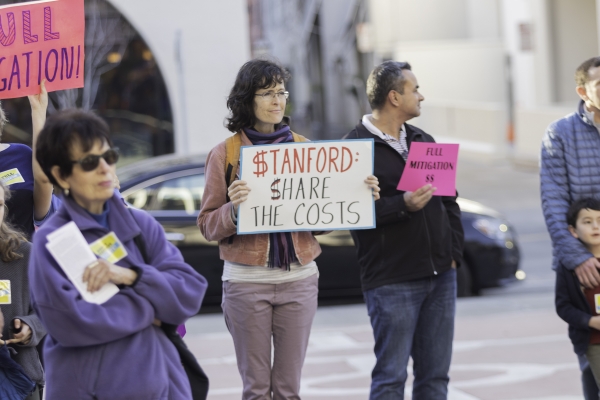
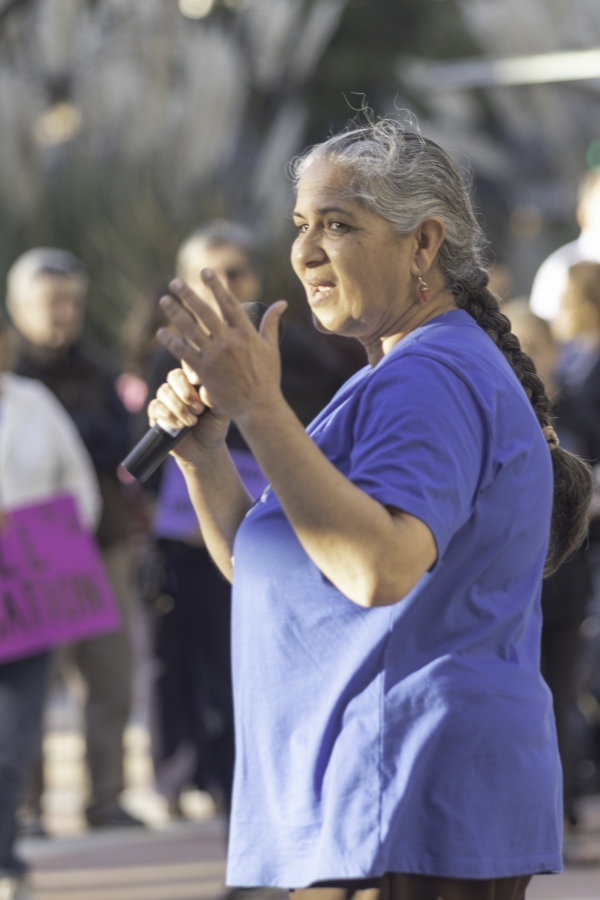
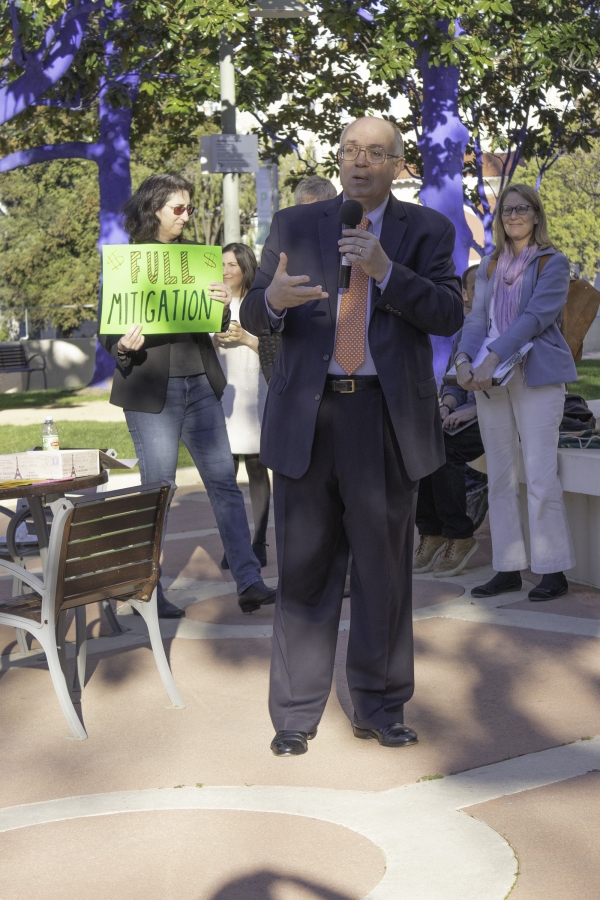


Comments
Community Center
on Mar 15, 2019 at 9:39 am
on Mar 15, 2019 at 9:39 am
County - do not require Stanford to build more housing for SEIU employee staff. Your own EIR says that would be worse for the environment (more net trips) and not meet the application's mission (educational).
More housing means more traffic and means more unpaid students for PAUSD. The county should not force Stanford to build more. This does not benefit our residents or our students' education.
Green Acres
on Mar 15, 2019 at 9:39 am
on Mar 15, 2019 at 9:39 am
I just wanted to point out a typo in this sentence:
"Simitian said that is a function of state law, which limits the ability of the county's ability to address school impacts as part of its environmental-review process."
I think you meant to remove "the ability of" since you have the word "ability" later in the sentence.
Feel free to delete this comment once you've fixed the typo. :)
Esther Clark Park
on Mar 15, 2019 at 9:52 am
on Mar 15, 2019 at 9:52 am
The County is considering imposing millions and millions of dollars of costs on PAUSD and many more students. Stanford is tax exempt. The County knows this. The County plans to force students into PAUSD without the County paying for it.
Registered user
Crescent Park
on Mar 15, 2019 at 10:14 am
Registered user
on Mar 15, 2019 at 10:14 am
I was at the meeting last night. Many there were very happy that the county is requiring Stanford to build a minimum of 1,600 + housing units on Stanford campus with - if I read the handout correctly - at least 40% of those units designated affordable housing. And then PAUSD wants a guaranteed amount per student from Stanford that lives in that housing. Clearly, with conditions like those, the goal is to force Stanford to back away from doing any development.
Southgate
on Mar 15, 2019 at 10:15 am
on Mar 15, 2019 at 10:15 am
Decrease the amount of non-academic square footage from 2.275 million square feet to 1 million square feet for this 2018 GUP.
Community Center
on Mar 15, 2019 at 10:47 am
on Mar 15, 2019 at 10:47 am
"Decrease the amount of non-academic square footage from 2.275 million square feet to 1 million square feet for this 2018 GUP."
Ironically, this could be what Stanford prefers. The logic would be that this process has been a nightmare for them, with far harsher conditions than they expected (and badly managed by them, but that's another story). They might decide to try their luck again in 5-7 years - Simitian will be gone and they can try a different approach (e.g., work out a deal with the schools in advance).
This would actually be bad for Palo Alto, which would need to fight this whole battle over again, and would be in the hands of some future North County Supervisor, who might not be a Palo Alto resident.
My view is that community has done its job, and now it's time for the elected officials (Simitian and the other supervisors) to finish theirs and get a long-term deal done that actually mitigates Stanford's growth. Good luck!
Community Center
on Mar 15, 2019 at 11:11 am
on Mar 15, 2019 at 11:11 am
I suggest that Stanford start using the dish area for housing. The “gimme, gimme, gimme” attitude of Palo Alto towards Stanford is revolting. Time for joe simitian and his nanny state way of thinking needs to go. How about simitian seeing that Palo Alto actually do something to address their housing shortages- something that have not done for decades. But far easier to try to milk the Stanford cash cow.
Stanford
on Mar 15, 2019 at 12:06 pm
on Mar 15, 2019 at 12:06 pm
It may be useful to remember how obscenely wealthy Stanford has become.
"2018 fiscal year, which ended June 30, but said that it was $26.5 billion at the end of August." Web Link
Esther Clark Park
on Mar 15, 2019 at 12:17 pm
on Mar 15, 2019 at 12:17 pm
Why mention the endowment? You think you're entitled to grab some of it because it's there? Because some people gave money to Stanford for other purposes?
The endowment is to fund education for the underprivileged who can't afford to attend Stanford, to fund university operating expenses and to carry on the educational mission of the university, among other things, not to fund employee housing.
Registered user
Evergreen Park
on Mar 15, 2019 at 2:09 pm
Registered user
on Mar 15, 2019 at 2:09 pm
I think bringing up the endowment is relevant since Stanford is dragging their heels about complying with the EIR, as other developers are required to do. This simply points out that Stanford can't claim they can't afford to mitigate the impacts of what they want. Remember, Stanford has no unilateral right to any expansion. Also keep in mind that, unfortunately, their expansion plans as proposed are intended to have a negligible impact on the number of students they educate despite the huge and qualified applicant pool that Stanford turns away every year.
Mrs. Stanford's stated intention when she funded and founded the school was to give a free education to the boys and girls of California. How ironic.
Registered user
Evergreen Park
on Mar 15, 2019 at 2:59 pm
Registered user
on Mar 15, 2019 at 2:59 pm
"bring an estimated 9,610 new people to the campus, according to the environmental analysis for the GUP."
That depends on what what the count was based on.
Was it based on the current (although outdated) building code which estimates only one office employee per 250 sq ft which the impacts of commute traffic and parking needs are still calculated? Which developers love.
Or based on the new reality of multiple employees in that space using powerful laptops? In which case that 9,610 number could be easily be double or triple. That's a huge difference.
Developers love the outdated "standard" that is used because it vastly underestimates the impact of commute traffic and number of parking spaces needed.
Registered user
Greendell/Walnut Grove
on Mar 15, 2019 at 9:04 pm
Registered user
on Mar 15, 2019 at 9:04 pm
Video of the meeting is now available on YouTube:
Web Link
College Terrace
on Mar 15, 2019 at 11:27 pm
on Mar 15, 2019 at 11:27 pm
Stanford has focused on building housing for faculty and graduate students. However two groups critical for its research and teaching missions, post-docs and lecturers, respectively, seem to be largely forgotten. The majority of Stanford employees report that the cost of housing is, by far, their greatest challenge to continuing to work at Stanford. Yet, unlike either graduate students or faculty, post-docs and lecturers are largely ineligible for subsidized housing. Perhaps a portion of the proposed 1,600 units of below-market housing on Stanford property could be dedicated to individuals in these two essential, but largely forgotten, groups of its employees.
Fletcher Middle School
on Mar 16, 2019 at 8:44 am
on Mar 16, 2019 at 8:44 am
PAUSD notices that they have large Stanford student population only when they hope to milk Stanford for money. It would cost NOTHING to align the school district spring break with Stanford's break. Yet it seems PAUSD does not care about Stanford parents left behind when their children are free to go on short vacation exactly one week after their parents had a break at Stanford.
I have a feeling that the district tries to force its way rather than to offer cooperation and community building.
College Terrace
on Mar 16, 2019 at 9:10 am
on Mar 16, 2019 at 9:10 am
Stanford STAFF are even lower on the totem pole and are forgotten and hurting.
Web Link
Fairmeadow
on Mar 16, 2019 at 9:26 am
on Mar 16, 2019 at 9:26 am
"PAUSD does not care about Stanford parents left behind when their children are free to go on short vacation"
Here's an idea - maybe Stanford should align its spring break with PAUSD? Or at least come to PAUSD and propose aligning calendars for the benefit of shared families?
The idea that it is incumbent on the public schools, a government agency, to research a local employer's break schedule, without anyone at Stanford even coming to propose that, shows the bubble that Stanford people live in.
Registered user
Evergreen Park
on Mar 18, 2019 at 1:48 pm
Registered user
on Mar 18, 2019 at 1:48 pm
In the last few years Stanford has bought approximately 30 homes in College Terrace, most of which are unoccupied for two or three years before being torn down. In the interim wish they would lease these homes to to graduate students or post-docs rather than leaving them sitting empty.
Community Center
on Mar 18, 2019 at 3:04 pm
on Mar 18, 2019 at 3:04 pm
Stanford is no longer just a university. It is an educational industrial complex, actually a small city.
Its employees range from university administrators and faculty (including doctors at the Medical School) through graduate students (teaching assistants) and a wide range of different categories of staff including clerical, nursing infrastructure maintenance, building maintenance, landscape/gardening . . . etc. Many of the higher level employees live on campus and some of those lower on the list live on campus. But it does not currently house all the people who have jobs on campus.
Stanford proposes to drastically increase the number of people who will work there. But it does not propose to house them all, thus putting the housing and traffic burden on the surrounding communities. Stanford is thus adding un-housed jobs. So why is Stanford not subject to the ABAG rules and the latest attempts - SB 50 and the CASA compact - to demand that cities add large amounts of high density housing?
Adobe-Meadow
on Mar 19, 2019 at 10:09 pm
on Mar 19, 2019 at 10:09 pm
Does google house all their employees? Facebook, oracle, salesforce, Safeway?? (see where I'm going with this?)
another community
on Mar 19, 2019 at 10:32 pm
on Mar 19, 2019 at 10:32 pm
"Does google house all their employees? Facebook, oracle, salesforce, Safeway?? (see where I'm going with this?)"
And what a wonderful world it would be...especially if they could all reside in Palo Alto!
Midtown
on Mar 20, 2019 at 1:46 am
on Mar 20, 2019 at 1:46 am
It seems that most locals have forgotten, or never knew, that both Paly and Gunn High Schools are on dedicated Stanford land. There's also been a decades-long decline in the numbers of grad student families with children, which was part of what encouraged the enormous multistory graduate housing in-fill of Escondido Village.
Also overlooked is the amount of Stanford growth that does not pertain to the main campus. Stanford's new North Campus in Redwood City is targeted for transfer of a large percentage of non-academic departments. See: Web Link That separate campus, in a different city and county, won't be well-served by housing expansion on the main campus. North Campus is not currently linked by a regular shuttle to the main campus because non-academic operations won't rely on that kind of physical connection. So, how aware is Supervisor Simitian of such realities; he has to know; North Campus has been in the works for nearly a decade and a half. Maybe, this proposed housing construction uptick is a goad for Stanford's expansion in a separate county?
Adobe-Meadow
on Mar 20, 2019 at 8:59 am
on Mar 20, 2019 at 8:59 am
"Most locals have forgotten, or never knew, that both Paly and Gunn High Schools are on dedicated Stanford land"
That's an urban myth, and was never true, though many still believe it. Paly and Gunn, as well as Nixon and Escondido, are on land *purchased* by PAUSD from Stanford, mostly in the 1950s and 1960s (the original Paly site was purchased around 1920). They got around Stanford's prohibition on selling land by utilizing eminent domain. Eminent domain requires "just compensation" (check the Fifth Amendment: "...nor shall private property be taken for public use, without just compensation") which equates to "fair market value," so there was no special bargain involved.
Check any GUP related map or ask the school district (or Stanford) - you'll see these sites are PAUSD owned and operated, and have been for 50+ years.
Stanford
on Mar 20, 2019 at 2:33 pm
on Mar 20, 2019 at 2:33 pm
Stanford should be encouraged and allowed to build high-rise buildings (over 20 story) to accommodate housing, preferably with mixed use and underground parking.
The SAME should be encouraged and allowed for all of Palo Alto.
Registered user
Crescent Park
on Mar 20, 2019 at 3:14 pm
Registered user
on Mar 20, 2019 at 3:14 pm
@PAUSD owns schools sites. You are correct that because Stanford cannot sell land, the way they went around it when school sites were identified, they used "eminent domain." But, it was "friendly" eminent domain meaning that Stanford accepted nominal compensation for the sites since they had to be compensated, but nowhere near the FMV of the lands.
Adobe-Meadow
on Mar 20, 2019 at 3:24 pm
on Mar 20, 2019 at 3:24 pm
@Crescent Park Res - so we agree the school district does own the land. That's good, since there is the persistent myth that they do not.
Do you have any data to support your view? Given that the land could not otherwise be sold under the trust, and the deed contains a reversionary interest, I would think fair market value would be pretty low, much, much lower than a fee simple commercial property deed. Since the compensation paid wasn't truly nominal (like $1), I expect it was in fact FMV. But if you have data showing how the price was calculated, that would be interesting.
Registered user
Crescent Park
on Mar 20, 2019 at 3:38 pm
Registered user
on Mar 20, 2019 at 3:38 pm
@PAUSD owns the schools. Stanford could have leased the land to PAUSD and retained ownership. But, they didn't. So, simply look at what the county values anyone of the lots on which Stanford does lease land to an entity to see what the FMV would be. Given that enrollment continues to decline at PAUSD - and will continue to decline as long as our senior population continues to increase. I would hope that, if Stanford does end up providing land for a new school on the West Side of campus, that they lease it to PAUSD for some nominal amount instead of setting up another eminent domain. That way, when the school closes, instead of PAUSD leasing it out (like they do with Pine Woods), Stanford can use the land for something else.
Adobe-Meadow
on Mar 20, 2019 at 3:56 pm
on Mar 20, 2019 at 3:56 pm
@Crescent Park Res, thanks. If you find any data to support your view, please share. Hopefully it would incorporate the reversionary interest, as that seems like a key feature. And of course, this would be for land values in the 1950s.
I agree, it would be great if Stanford offered to lease land to PAUSD at a nominal rate - I'm sure they would welcome it. So far they have offered nothing at all, according to the school district.
Registered user
Crescent Park
on Mar 20, 2019 at 4:04 pm
Registered user
on Mar 20, 2019 at 4:04 pm
@PAUSD owns the school sites. Honestly, after the mis-information (PAUSD absorbs $8M in annual costs to educate 160 students on Stanford land who live in tax exempt housing! Not true! Even with their own numbers of $20K per child, that's more than double) and hyperbole ($20K per student!) that some of the school board members put out there, they've lost all credibility with me. Seriously. It's sad. They used the "Trump Way" instead of a community-based approach method to have a focused, rational discussion about this matter. They've created division in our community instead of unity. I do not think they are good role models for our children. Next election, I will remember all of this.
University South
on Mar 20, 2019 at 9:29 pm
on Mar 20, 2019 at 9:29 pm
Is there any body in Palo Alto less competent than the school board? It is easy to understand why Stanford had trouble talking with them. Now that the process has exposed the duplicitinous of PAUSD, there is a better chance of a reasonable deal.